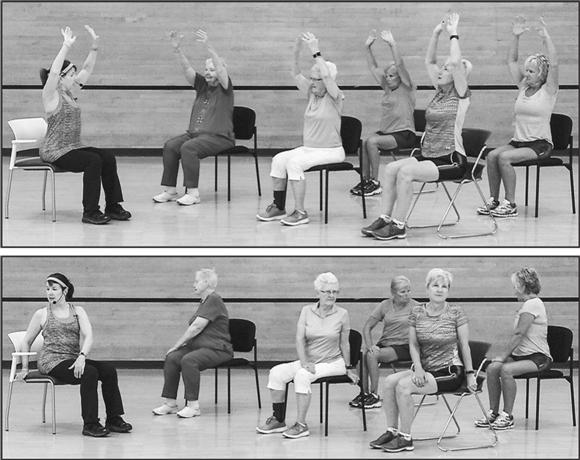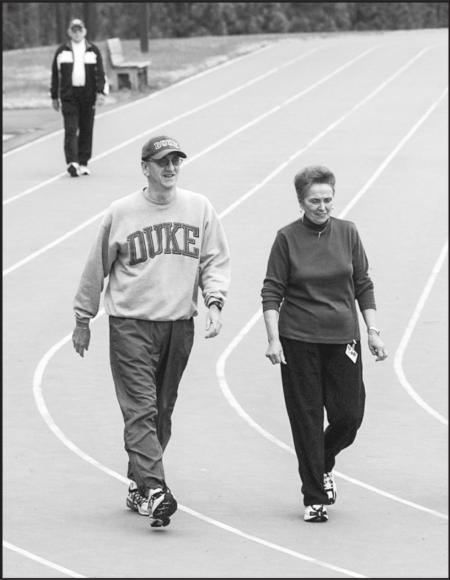Trends in group exercise
This is an excerpt from Methods of Group Exercise Instruction 4th Edition With Online Video by Mary M Yoke,Carol Armbruster.
Group exercise classes are the lifelines of many fitness programs. They generate enthusiasm and create the connectedness needed to keep people coming back. The reality of our current health status is that for the first time since 1993, life expectancy in the United States at birth has declined from 78.9 years to 78.8 years (Xu et al. 2015) while global life expectancy has risen. When group exercise first emerged, many people considered it to be a fad, but it is clear that group exercise is here to stay. The U.S. Healthy People 2020 (2018) objectives emphasize increasing the proportion of the population that is at a healthy weight, increasing physical activity, and reducing the number of people who have functional limitations. A CDC (2018) U.S. scientific report, put together by researchers tasked with modifying the 2008 Physical Activity guidelines, emphasized the power of movement—any movement—for improving the health and wellness of individuals. This new scientific report provides evidence of the broad health benefits that movement and exercise bring to individuals who engage in movement experiences on a regular basis. While traditional fitness programming delivery methods for group exercise instruction may be a productive options for individuals who can afford a fitness membership and who are intrinsically motivated to exercise, the issue becomes capturing the large portion of the population not engaged in fitness experiences. We believe that neighborhood walking groups, groups training for couch-to-5k walking or running events, and senior sit-and-fit offerings in assisted living care are also a part of the new group exercise movement of the future. All the guidelines in this book apply not only to group fitness in a facility but also to bringing group fitness into less traditional spaces.

Older adult group exercise class.
According to Tharrett (2018), within the last 8 to 10 years traditional health and fitness club memberships have held steady at 14% to 20% of the U.S. population, with the international population having less market penetration than the United States. Evidence suggests that traditional facility-based fitness programming may not be as inclusive as once thought. While traditional fitness programming delivery methods may be a productive option for individuals who can afford a health club membership and who are intrinsically motivated to exercise, the issue arises concerning capturing the other 75% to 80% of the population not engaged in fitness experiences. For example, those participants who run outside may achieve health benefits from running that are similar to a fitness center group exercise class. It might be time to rethink the delivery of fitness programming that will naturally move more participants toward a small-group experience, particularly participants who are beginners and are inactive in their daily living activities. Currently, personal training is popular, but in the same hour a personal trainer spends with one client, a group fitness instructor may reach 40 to 50 participants. Personal trainers who are also group exercise instructors may have many more opportunities to find clients due to their visibility as group instructors.

Participants can see similar results in group exercise that takes place outside a traditional fitness center.
ACSM Guidelines for Exercise and Sitting Time
The most recent ACSM (2018) recommendations for exercise are presented in the “Summary of the 2018 ACSM Evidence-Based Recommendations for Exercise for Healthy Adults” in this chapter. These recommendations will be outlined in more detail in successive chapters. It is interesting to note that the current ACSM evidence-based guidelines (2018) validate a typical group exercise class format dating back to the inception of group exercise in the 1970s. The guidelines include cardiorespiratory, muscular strength and endurance, neuromotor movement, and flexibility training, all of which have been a part of the group exercise experience for many years. A contemporary focus on incorporating neuromotor (specifically balance) movements into group exercise experiences is relatively new to the ACSM evidence-based guidelines; this emphasis reflects the trend toward a focus on functional fitness and concerns about the fitness of an aging population. You will hear more about this topic later in chapters 8 and 9.
Sedentary Living Concerns
In addition to the need for following the ACSM exercise guidelines, total time spent sitting is a health concern that has attracted more attention in the literature and should be considered by group fitness instructors. Van der Ploeg and colleagues (2012) demonstrated dose-response associations between sitting time and mortality from all causes and between sitting time and cardiovascular disease, independent of leisure-time physical activity. In other words, a single leisure-time physical activity (such as attending a group exercise class) was not enough movement to compensate for too much sitting time in terms of improving health and mortality risk. Katzmarzyk and colleagues (2009) concur that extended sitting results in “metabolic alterations” that cannot be compensated for by an isolated exercise session. Similarly, Levine's (2014) work at the Mayo Clinic determined that the negative effects of six hours of sedentary time were similar in magnitude to the benefit of one hour of exercise. Finally, a recent article by Siddarth and colleagues (2018) found that sedentary behavior was also associated with detrimental temporal lobe brain thickness in older adults. We encourage you to explore websites that contain literature on sedentary living, such as Juststand.com. Consider offering classes that are shorter in length to encourage the nonactive sitting population to move.
More Excerpts From Methods of Group Exercise Instruction 4th Edition With Online VideoSHOP

Get the latest insights with regular newsletters, plus periodic product information and special insider offers.
JOIN NOW
Latest Posts
- Using double inclinometers to assess cervical flexion
- Trunk flexion manual muscle testing
- Using a goniometer to assess shoulder horizontal adduction
- Assessing shoulder flexion with manual muscle testing
- Sample mental health lesson plan of a skills-based approach
- Sample assessment worksheet for the skill of accessing valid and reliable resources


